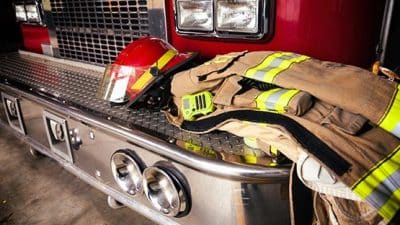
Wahoo Ingenuity
The researchers conducted the tests after a small number of blood samples were found to be damaged after being delivered through the hospital’s pneumatic tube system. This was odd, as the tube system has been in use for many years without such a problem. (Similar systems are in use in hospitals around the world — and at banks, to many a child’s delight.) Something had clearly gone wrong.
Seeking to understand the source of the problem, the UVA team looked for a diagnostic tool. When they couldn’t find anything designed for the tube system, James H. Harrison Jr., MD, PhD, came up with a daring idea: What if they used a smartphone’s accelerometer to assess the forces acting on the blood samples during transit? There were apps for smartphones that record forces, so it seemed feasible. But could a smartphone withstand the kinds of forces that occur in a pneumatic tube system? There was just one way to find out.
Strapping In
Having recently upgraded their smartphones, Garrett R. Mullins, PhD, a clinical chemistry postdoctoral fellow, and David Bruns, MD, a professor of Pathology, brought in their old smartphones. Mullins strapped his old phone into one of the canisters used to transport blood samples through the tubes and sent it on its way. “I probably wasn’t as worried about it as I should have been,” he recalled.
The phone, however, emerged safely, carrying valuable data on the forces within the tube system. To visualize what happens to a blood sample during transit through the system, Mullins used the two smartphones, one to record a video and the other to illuminate the blood sample. Bruns jokingly says he was “absolutely appalled” at the prospect of his phone going into the tube system.
To Mullins’ good fortune, both phones arrived intact. The resulting video shows the blood sample rocketing along, encountering turbulence along the way. And the investigations gave the inquisitive investigators the data they needed to create a hypothesis about what was happening: Blood samples could be shipped without incident except through the longest route in the tube system. Their innovative approach had provided the answers they needed to ensure the integrity of blood samples.
Valuable Tool for Hospitals
Since their initial experiments, Mullins and Bruns have sent phones through the tubes dozens of times, and, amazingly, not once has a screen arrived broken. The worst damage has been some minor scratches. As such, they have created an unorthodox but easy and inexpensive way for hospitals to monitor their tube systems and ensure the safe arrival of blood samples.
Still, they recommend that their colleagues at other hospitals might want to use an old phone and not a new one, just in case.
Experiment Described
The new technique has been described in the scientific journal Clinical Chemistry in a report written by Mullins, Harrison and Bruns.










